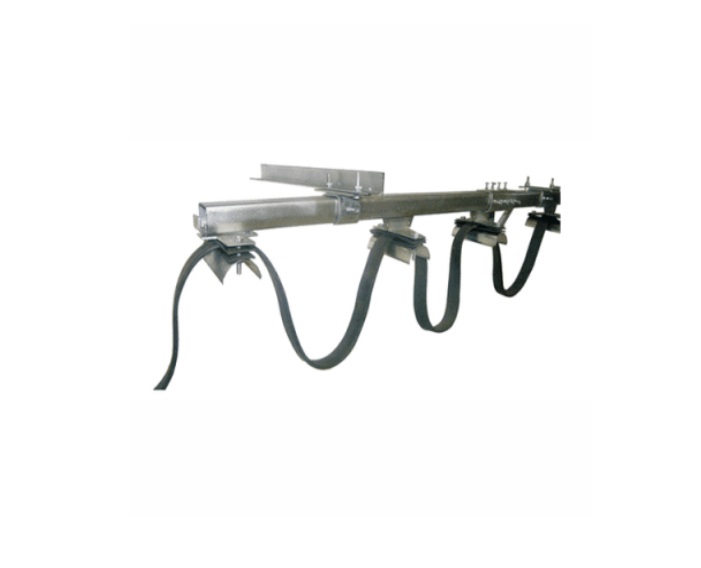Choosing the Right Cable Trolley for Your Crane System

Introduction:
Cable trolleys are indispensable components of overhead crane systems, facilitating the smooth movement of loads along elevated tracks. Selecting the appropriate cable trolley is critical for ensuring optimal crane performance, safety, and efficiency. This comprehensive guide aims to navigate the key considerations involved in choosing the right cable trolley for your specific crane system requirements.
Selecting the ideal cable trolley is a pivotal decision in establishing an efficient and safe overhead crane system. The significance of this choice lies in the pivotal role that cable trolleys play—they are the silent workhorses that navigate the length of the crane tracks, enabling the seamless movement of heavy loads. Choosing the right cable trolley involves a careful analysis of various factors, each critical in ensuring smooth operations, optimal load handling, and overall system reliability.
This guide is crafted to navigate the complex terrain of selecting the appropriate cable trolley for your crane system. From understanding the essential features of cable trolleys to exploring the nuanced considerations of load capacities, speed requirements, track configurations, environmental influences, and safety features, this comprehensive guide will empower you with insights crucial for making an informed decision.
In this introduction, we’ll embark on a journey to unravel the intricacies of cable trolleys. By delving into the key considerations and available types of cable trolleys, this guide aims to equip you with the knowledge needed to navigate the myriad choices and confidently choose the optimal cable trolley that aligns with your crane system’s unique operational needs.
Whether you’re seeking to understand the technical aspects, exploring the diverse types of cable trolley systems, or seeking expert advice for your specific requirements, this guide will serve as a comprehensive resource to aid in your quest for selecting the right cable trolley—an indispensable component in maximizing the efficiency, safety, and productivity of your crane system.
Key Factors to Consider:
- Load Capacity: Determining the maximum load capacity the cable trolley will need to support is fundamental. It’s crucial to choose a trolley that comfortably handles the anticipated weight of the loads without compromising safety.
- Speed Requirements: Consider the desired speed of load movement. Different trolley designs accommodate various speeds, and selecting the appropriate one ensures efficient and smooth operations.
- Track Configuration: Evaluate the track layout, whether straight, curved, inclined, or a combination. Ensure that the selected cable trolley is compatible with the track’s configuration for seamless movement.
- Environmental Conditions: Assess the operating environment, including temperature variations, humidity, exposure to corrosive substances, or potentially explosive atmospheres. Opt for trolleys with suitable coatings or materials that resist corrosion and withstand harsh conditions.
- Safety Features: Prioritize safety features such as anti-derailment mechanisms, overload protection, and secure cable retention systems. These features enhance operational safety and prevent accidents.
Types of Cable Trolleys: a. Festoon Systems: Suitable for longer travel distances and a range of load capacities, these trolleys utilize a series of cable loops supported by wheeled trolleys. b. C-Track Systems: Utilizing a C-shaped track, these trolleys offer versatility and smooth movement, suitable for various track layouts and load capacities. c. I-Beam Systems: Designed for use with I-beam tracks, these trolleys are robust and often used in heavy-duty applications.
Consulting Experts and Manufacturers: Engage with reputable crane system manufacturers or industry experts to gain insights into specific requirements and available options. They can provide tailored recommendations based on your operational needs and help navigate through the various trolley designs and features available in the market.
Conclusion:
In conclusion, the selection of the appropriate cable trolley is a pivotal decision in ensuring the seamless operation, safety, and efficiency of your crane system. By considering key factors such as load capacity, speed requirements, track configuration, environmental conditions, and safety features, you pave the way for optimal performance and longevity.
The right cable trolley not only supports the intended load capacity but also aligns with the specific needs of your working environment, whether it involves extreme temperatures, corrosive substances, or unique track layouts. Moreover, prioritizing safety features and mechanisms within the chosen trolley mitigates potential risks and ensures a secure operational environment.
Engaging with industry experts and reputable manufacturers provides invaluable guidance and insights into the diverse range of available options, enabling you to make informed decisions tailored to your operational requirements.
Ultimately, investing time and effort in the meticulous selection of the proper cable trolley contributes significantly to the overall efficiency, safety, and productivity of your crane system. A well-chosen trolley not only facilitates smooth load movement but also minimizes downtime, enhances operational reliability, and promotes a safer working environment for your personnel, ultimately maximizing the return on your investment in crane infrastructure.